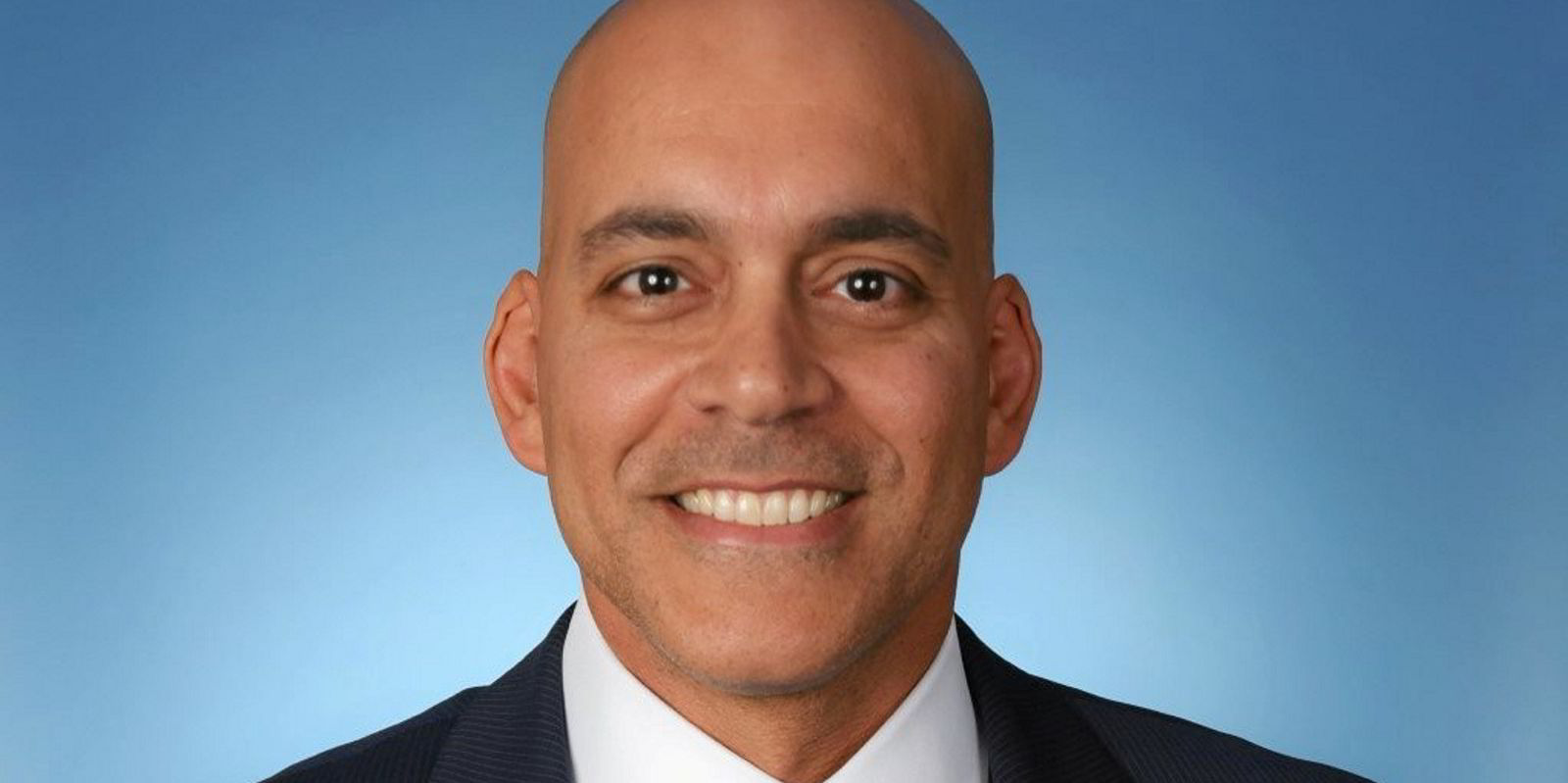You might say 2023 has been Frontline’s year.
To be sure, it’s the year John Fredriksen’s company broke its long losing streak in the mergers-and-acquisition game by closing in on the largest deal in tanker market history: the pending $2.35bn buy of 24 VLCCs from Belgian owner Euronav.
But it’s also been a very good year for Frontline’s stock.
The tanker giant has gained 54.7% since 1 January and returned 75.9% with dividends considered, making it the top performer of the 28 stocks under coverage of investment bank Jefferies.
Frontline also topped all companies in performance over the third quarter with gains of 29.3% in price and 34.8% in dividends, according to figures provided to Streetwise by Jefferies lead shipping analyst Omar Nokta.
The Q3 gains come even though there was just a single trading day after TradeWinds broke news of the likely tanker acquisitions by Frontline on 28 September.
“I think part of the performance is the crude-market bellwether status that Frontline has started to regain,” Nokta told Streetwise in an interview.
“But it’s a combination, and clearly, some of it has to do with the Euronav talks. As we got closer to the deal being announced, we were getting feedback from investors that a deal might be in place that did not carry the substantial acquisition premium that was once attached when the merger was first announced [in 2022].”
Original terms of the proposed 2022 merger assigned Euronav a premium of 1.35 on a net asset value-to-NAV valuation of the two fleets based on the outlined shares exchange.
The premium offered created an “acquirer’s discount” on the Frontline stock that was only partially erased when Fredriksen backed away from the merger in January, Nokta said. In the deal just announced, Frontline is getting the tankers at slightly below Euronav’s NAV, analysts estimate.
If Frontline has regained investor love, Euronav has been somewhat the opposite. The Belgian owner took a 3.6% loss in share price over the first three quarters. While this improved to an 11.8% return with dividends, Euronav still ranked eighth of the 10 tanker owners covered by Jefferies.
Euronav’s numbers for the quarter past were better — an 8% gain in share price and 13% with dividends — but again, this was good for only eighth place in the group.

“I think they followed the broader market higher, but again, as time went on, investors started to understand any deal was going to be more beneficial to Frontline than Euronav,” Nokta said.
In the broader view, tankers have been the big winners of the Jefferies stocks so far in 2023.
The 10 names have averaged a 19.5% gain in share price and a 30.2% return with dividends on the year. Much of that came in the third quarter, with a 16.1% share gain and 19.6% return.
While the overall result may not be a surprise when the tanker market is compared to most other operating sectors, the relative performance within the tanker group is, Nokta said, especially for the quarter past.
“A lot of the gains were made by the crude names in a quarter where rates were softer in that trade than in clean products,” Nokta said.
“That’s one I can’t explain quite so easily. But I think there’s some element of looking ahead past the recent weakness. Even though the fourth quarter may not be as strong as we thought and crude earnings are being revised downward, the recovery that now looks pushed into 2024 is setting up stronger than if it had happened earlier.”
There was one exception to the trend in that it was a product tanker company — Oslo-listed Hafnia — that finished second to Frontline for the quarter, gaining 27.8% on shares and 32.9% in dividends.
But the next three spots were taken by owners with all or predominantly crude tonnage. VLCC player DHT Holdings came third for the quarter with gains of 20.8% and 24.9%. Diversified tanker owners International Seaways (17.7% and 21.4%) and Tsakos Energy Navigation (16.6%) rounded out the top five.
The list is a little different for the top five performers year to date.
On share price alone, trailing Frontline are gas specialist Dorian LPG at 51.6%, Teekay Tankers at 35.1%, Herbjorn Hansson’s Nordic American Tankers at 34.6% and container ship lessor Danaos at 25.8%.
With dividends included, Dorian again follows Frontline at 67.4%, trailed by NAT at 48.7%, Teekay Tankers at 40% and Hafnia at 39.4%.
The tanker group plus Dorian and Navigator Holdings in LPG (23.5% and 23.9%) make up most of the good news across the Jefferies companies. This is another way to say that there’s not much to see in dry bulk or container ships.
The six dry bulk owners averaged a loss of 5.6% year to date, eking out a 0.4% gain with dividends. In the past quarter, they averaged a 1% loss and a return of 0.88%.
Greece’s Safe Bulkers is tops on the year at 11.3% and 16.5%, while Star Bulk Carriers did best last quarter at 8.9% and 11.1%.

Connecticut-based Eagle Bulk Shipping continues to struggle in share price. It was last in the group on the year with losses of 15.8% and 13.3% and for the third quarter at 12.5% and 11.3%.
Both Eagle Bulk and Star Bulk carried out stock buybacks from private equity’s Oaktree Capital Management in recent months. The results appear to reflect that investors view the tactic differently: good in Star Bulk’s case, not so much in Eagle Bulk’s.
Container ship companies are also down on the year by 2.5%, though legacy dividends from a formerly strong market managed to return 18%. As those dividends started to vanish, the performance last quarter was worse: losses of 5.8% and 5.2%.
Even Danaos lost share price last quarter at 0.9%. Germany’s Hapag-Lloyd still showed a nine-month return of 31.4% on legacy dividends but fell 10.1% last quarter as those disappeared.
Some encouragement
On a brighter note, Nokta makes the case that shipping is returning to the investment radar for more generalist investors, a trend he felt was confirmed by strong attendance at this week’s Capital Link maritime forum in New York.
“Hedge funds are still the largest part of the investment universe, but more generalists are involved, a lot more eyes and a lot more trading liquidity. Interest is at a level higher than pre-Covid,” he said.
But then there is this reality. As of this week, the average tanker stock is trading at 90% of NAV. The number slides to 75% for bulkers and 65% for container ships.
With that, Nokta let out a sigh.
“We’re just waiting for a day when NAV is the support level, not a target,” he said. “We’ve had that before, but it was more than 15 years ago. The floor, not the ceiling.”
More ship finance news
“I’ve never heard of them.” That was International Seaways chief executive Lois Zabrocky’s initial response after finding herself in an awkward spot on a crude tanker panel at Capital Link’s 15th annual maritime forum in New York on Tuesday. Click here to read.
If you’re throwing a ship finance conference in Manhattan, it kind of figures that the largest merger-and-acquisition deal in the history of the tanker market just might come up in discussion. Click here to read.
Norwegian Cruise Line Holdings is proposing a $790m bond sale in an effort to refinance existing debt as the company provided investors insight into its third-quarter performance. Click here to read.





